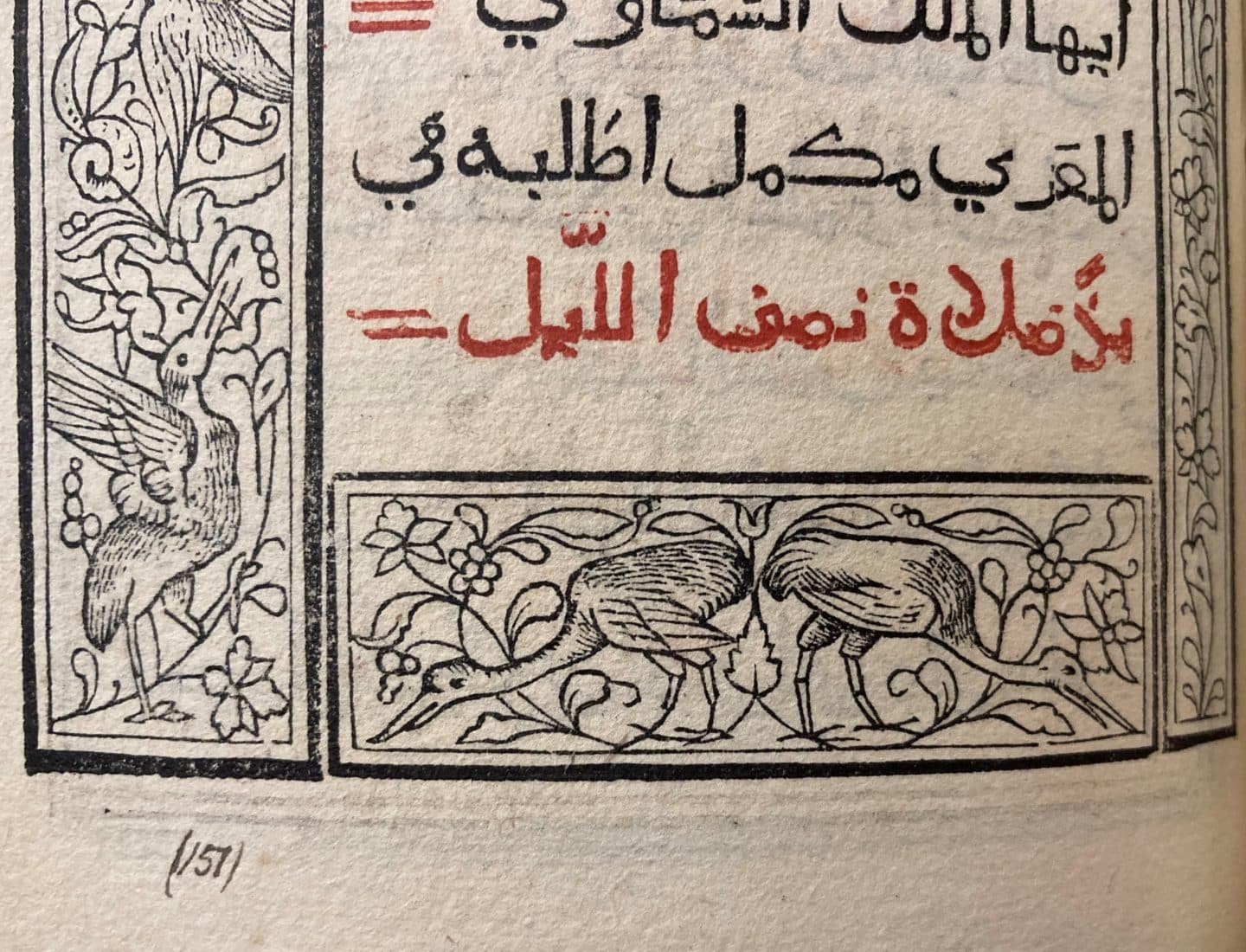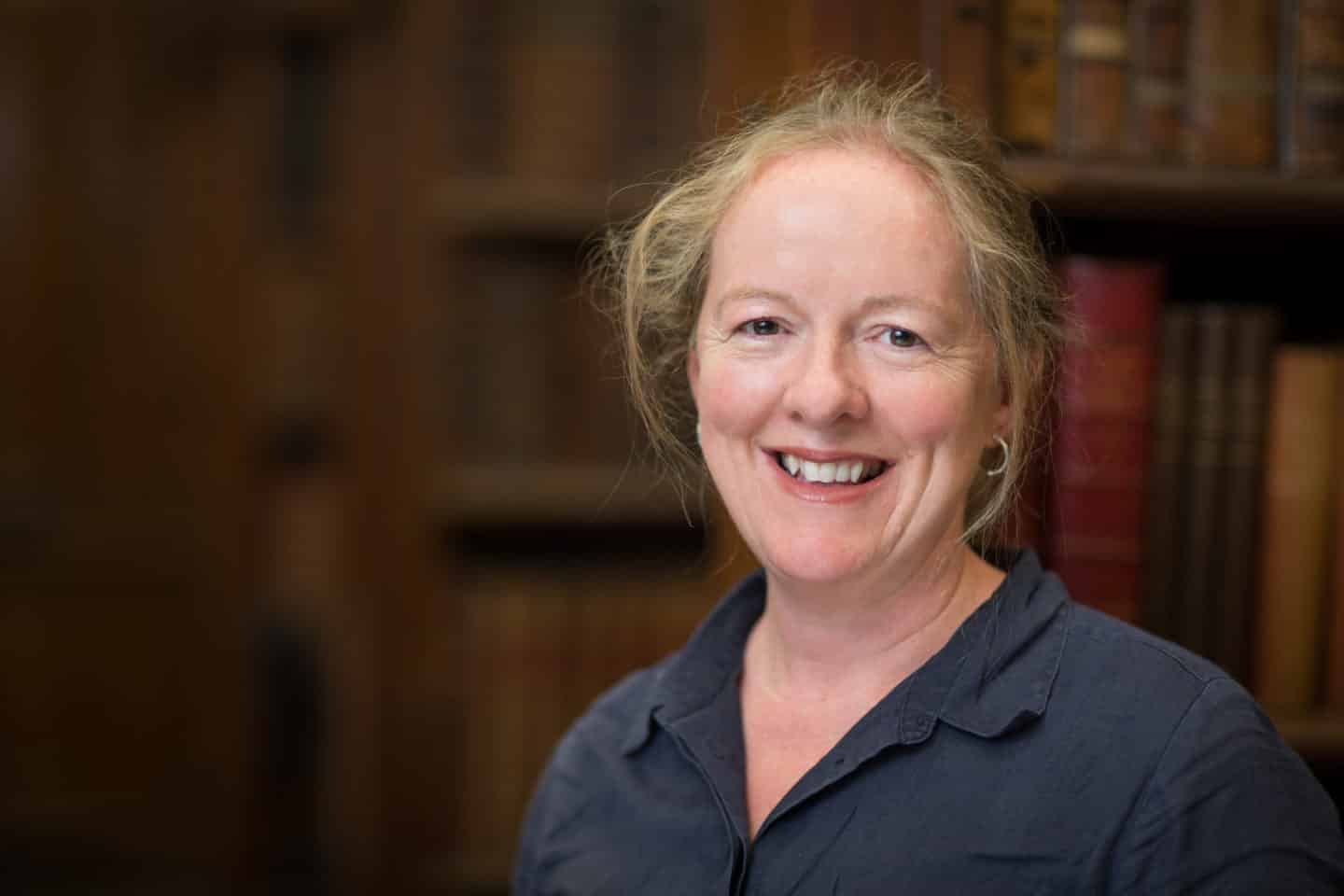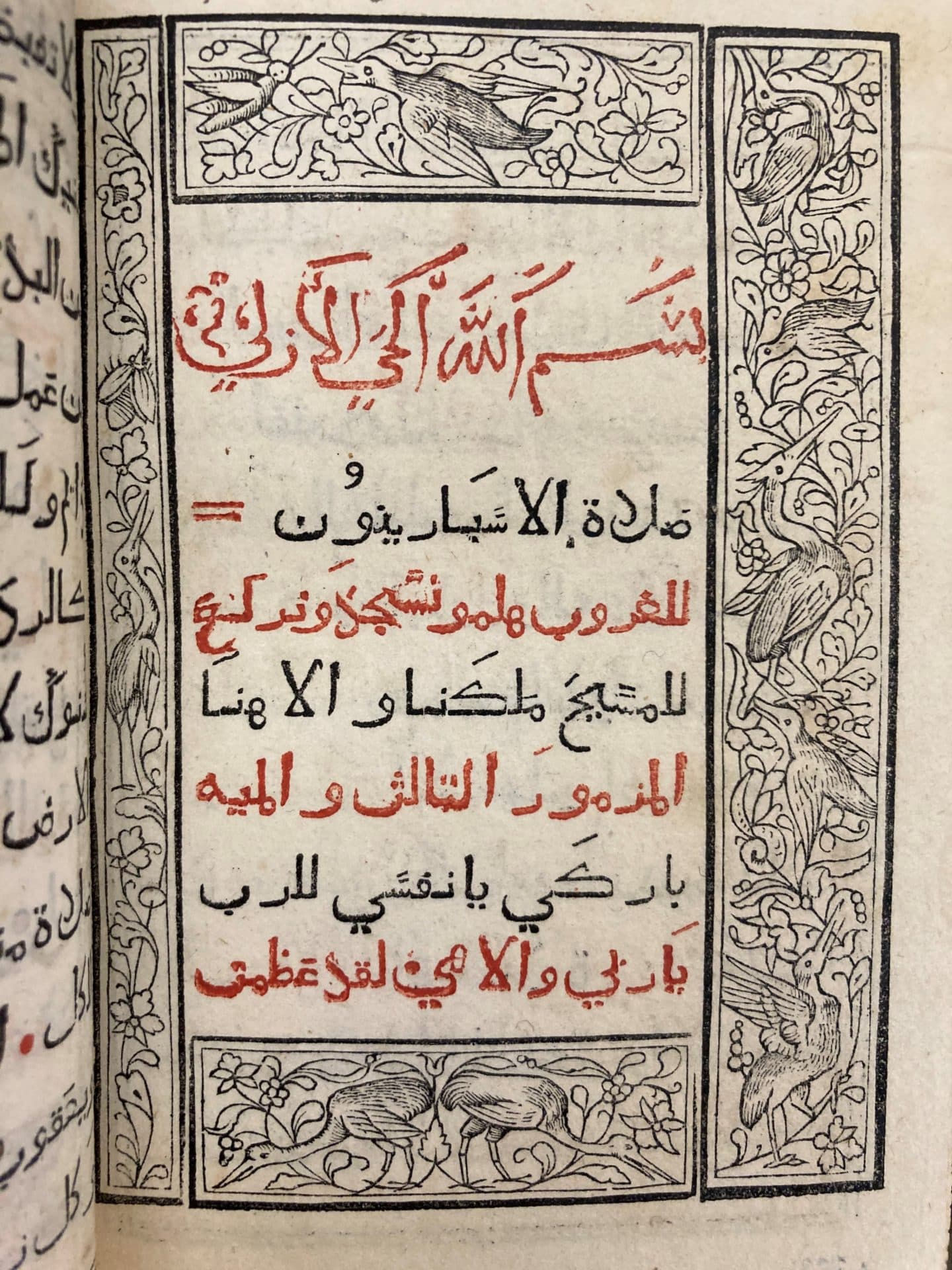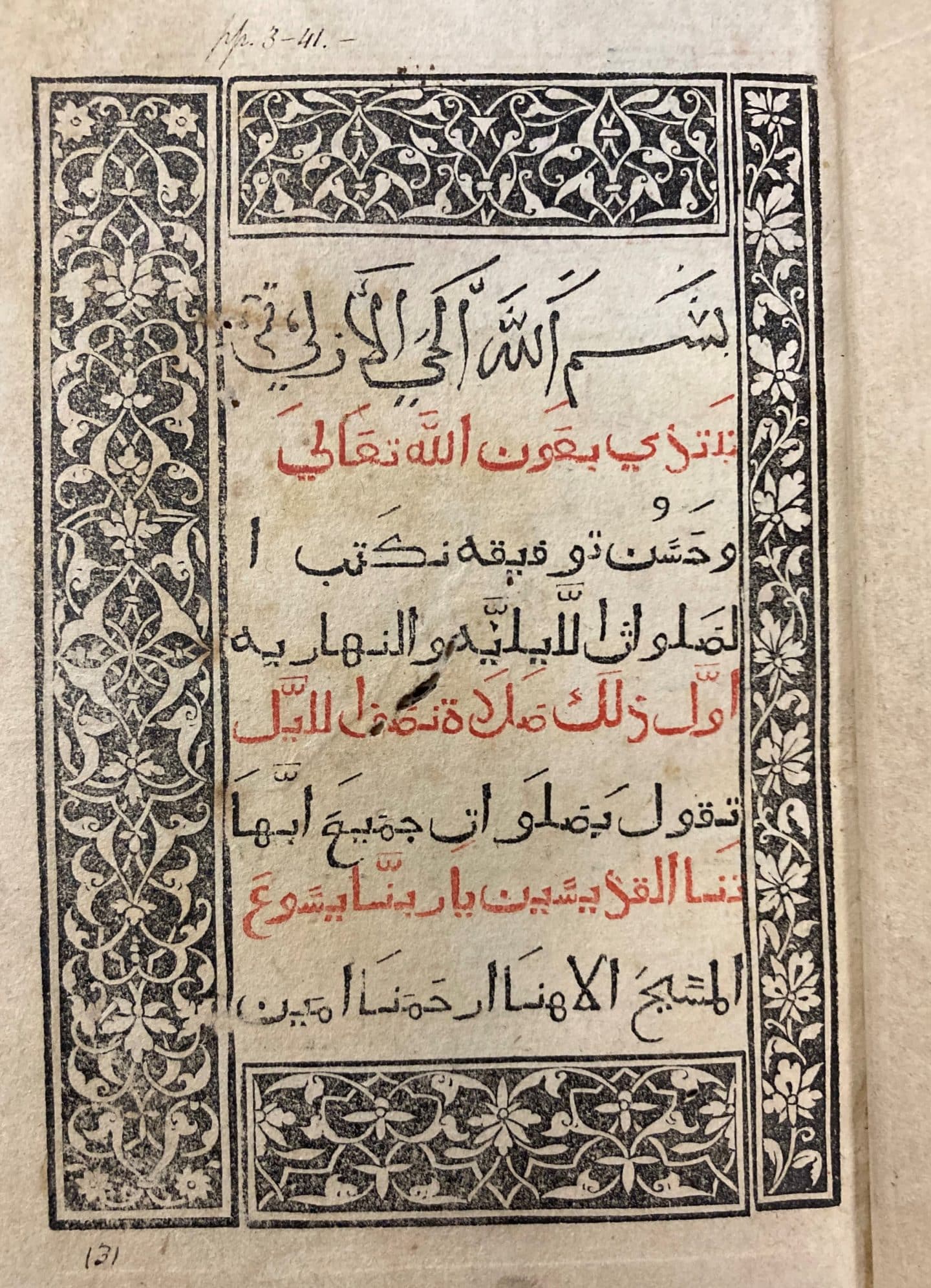Blog Post
Recently catalogued: an enigma in the Senior Library

It is always exciting to discover a ‘first’ among the early printed books on the shelves of Lincoln’s Senior Library and last month I did just that when I catalogued a copy of the first book printed in Arabic from movable type: a book of hours (Kitāb ṣalāt al-sawā'ī) printed in 1514. It is a beautiful book. The text (which includes an Arabic translation of the Psalms done by Abdallah Ibn al-Fadl al-Antakl, a theologian and translator active in Antioch in the 11th century) is printed in red and black in an elegant type with ligatures and vocalisation marks. The text is set within a series of woodcut borders. Some of these are in an arabesque design of vines, leaves and flowers; others are scattered with the repeated image of a bird with the long legs, neck and beak of an ibis.
Given the importance of this book, we know remarkably little about where or why it was produced. The colophon, in Arabic, claims the book was printed by the Venetian printer Gregorio de Gregorii in 1514, not in Venice but in the city of Fano. At least part of this imprint is fictitious: not only is there no evidence that de Gregorii printed books outside of Venice but, while Fano is an Italian city, the Arabic name in the colophon (Fān) might refer to a different city entirely, perhaps even a fictional one. One possible explanation for this is that de Gregorii (if indeed he was the printer of this work) needed to use a fictitious imprint, as printers have often done, to escape censorship. At this time the Venetian Republic granted monopolies to print books in esoteric languages such as Arabic, Syriac and Armenian. Records show that in 1514 a 25-year patent to do this was granted to the printers Lelio and Paulo Massimo, with penalties of up to 200 ducats for any infringement. A fictitious imprint would have enabled de Gregorii to avoid paying such a price.
There is also a certain mystery around why a book of hours would be printed in Arabic at the beginning of the 16th century. A Latin preface that was added to the book in 1517 (and only found in a single copy, in the British Library) suggests that the book was intended for the use of Christians in Syria. Another possibility is that the book was intended for the use of missionaries in North Africa and the Middle East more generally. The work might have been commissioned by Pope Julius II, who died in 1513, though the publication date suggests that Leo X might have been involved.
The final piece of this puzzle concerns how this particular copy ended up in the Senior Library. My first thought, on taking the book from the shelf, was that it was a 20th century acquisition. I had seen the binding before on a handful of other books (all in either Arabic or Syriac): a bright red leather tooled in gilt with gilt fore-edges and marbled endpapers, all a relatively modern attempt to mimic a historic binding. I had assumed that these books had come to Lincoln, possibly from a donor, in the last hundred years. But a closer examination of this particular book revealed another piece of evidence: 'D.161' written in ink on the front flyleaf. This looked to me very like a shelfmark I had come across in volumes from the library of Thomas Marshall (1621-1685), Oxford philologist and Rector of Lincoln. A quick look through titles listed under Marshall’s name in the College Donors’ book revealed a prayer book in Arabic, described as Preces horaria Arab, listed after a book I knew to have the shelfmark 4°D.160 on its own front flyleaf. Mystery solved! But knowing now that the book was rebound after it had been in the Senior Library for over 200 years, I will have to take a fresh look at the other books in this ‘historic’ binding.
If you are interested in seeing the record for this book on SOLO, Oxford’s online library catalogue, you can find it here.


